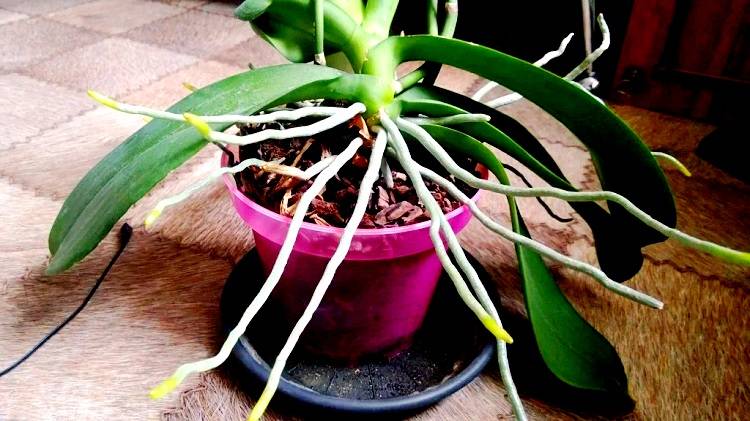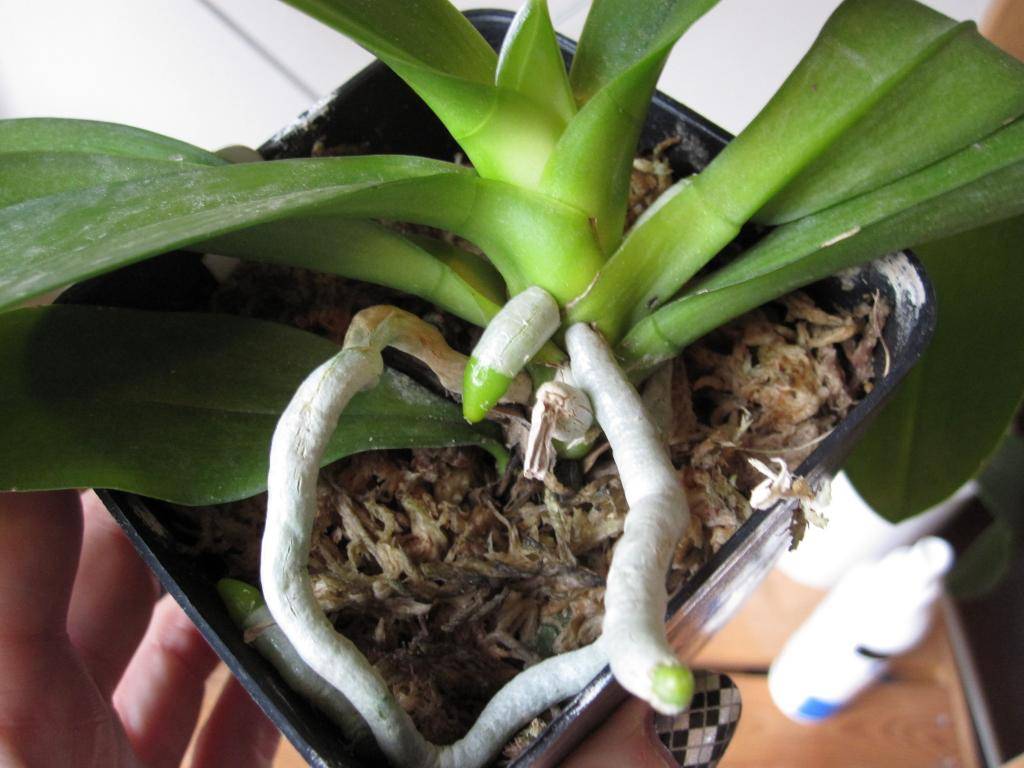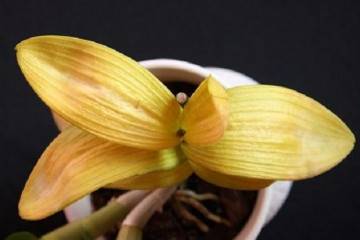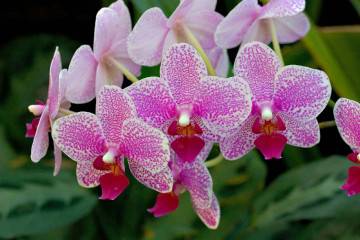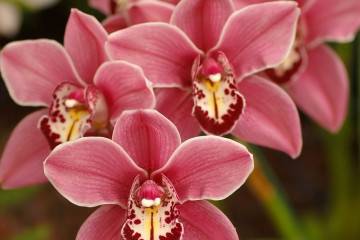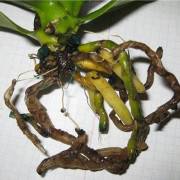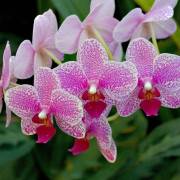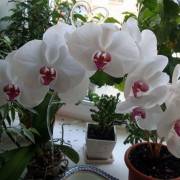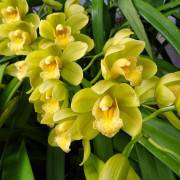Orchid aerial roots - what to do with them
Content:
Due to the cyclical nature of the seasons, it is not always possible to grow flowers in their natural environment. But as an indoor plant, you can grow any plant, even a flower such as an orchid. She won universal love for the beauty of flowers, unpretentiousness and exotic appearance of aerial roots. By the way, the latter are of practical importance. Indeed, in nature, phalaenopsis grows on trees, and the roots get food from the air. Their number, appearance can tell a lot about the health of a pet.
The appearance of aerial roots
The representative of the epiphytic family - the orchid - is a resident of the tropics. It is attached with roots to tree trunks, boulders and rocks, that is, all roots are suspended. In this case, trees / stones / rocks are used exclusively as a support.
Bulky, porous cylindrical processes, like a sponge, absorb water and nutrients from the humid air of the tropics. The accumulated volume is used when there is a lack of moisture in the environment.
In indoor conditions, the flower is planted in a transparent pot. Chopped tree bark is ideal as a substrate. In this case, the roots of the flower grow both into the substrate and on top of it. The lack of moisture in the air of the dwelling is replenished with moisture from the substrate.
Structure
Phalaenopsis is an absolutely unique plant. It does not have a so-called central root system. Root shoots are formed directly on the main shoot. They can crawl out of the leaf axils.
At home, some of the roots are in the substrate. But even in this case, the above-ground processes differ in size. They are more powerful, thicker and richer.
By their appearance, it is difficult to distinguish them from a flowering shoot. In order not to get confused, you need to remember a few differences in the root process:
- located between the sheet plates;
- downward pointing;
- the end is blunt, rounded, smooth.
Both those and others have a cylindrical shape. On closer examination, you can see that they are juicy and covered with a spongy shell (velamen), while the peduncle has a smooth and drier shell. The flower shoot will always climb up.
The vascular bundles filled with liquid give juiciness and fullness to the air processes. The color of the appendage also depends on the saturation of such reservoirs. High humidity gives it a green color, and as the moisture is used up, the shell becomes silvery. Both are within normal limits. Moreover, young roots are greener, while age ones gradually fade.
Functions
The main function of the aerial root system is to supply the orchid with essential trace elements. Another important function is the need for the plant to cling to the support. The flower also absorbs solar energy with them.
What to do with them
A home flower is planted in a pot one way or another. This means that for adhesion, some part of the roots will be in the substrate. But it is desirable that most of the aerial roots of the orchid remain on the surface.At best, they can be covered with moss on top. It will slow down the evaporation of moisture from the root surface.
If you need to transplant a plant, you need to revise the shoots. Dried, damaged and rotten aerial roots of the orchid are to be destroyed, that is, cut out, with a small healthy area (0.5-1 cm). Sprinkle the slices with crushed charcoal or cinnamon powder.
The causes of diseases and the fight against them
There are several reasons for the drying and decay of the processes.
Here is some of them:
- violation of the irrigation regime;
- excessive use of chemical fertilizers;
- irrigation water quality;
- thickening of the root system.
If there is nowhere to put the cut roots, then the parts of the appendix with pseudobulbs can be used (cut off) to obtain new plants. This should be done with a sharp knife rubbed with alcohol. Treat root slices with disinfectant powder (coal, cinnamon powder).
The wounds after this procedure should be covered with a dense film. This is why it is very important to keep the plant for 2-3 days without watering. Otherwise, moisture can provoke rotting of a healthy area.
If there is a sufficient number of remaining roots (at least 5-6 healthy ones), it is not difficult to leave a cut flower. The culture is quite tenacious.
Do I need to trim
Indoors with dry air, the orchid develops much more aerial roots than in its natural environment. It needs a lot of moisture for proper nutrition. This often leads to the loss of the beauty's presentation.
Sometimes, behind dense shoots, you can "lose" leaves and flowering shoots. But even in this case, it is undesirable to cut off healthy long processes. Although, due to inexperience, some amateur flower growers thin out the processes. Such manipulation seriously harms the plant. If it does not die, then it will take a long time to recover. It will be difficult to wait for the early flowering after such an operation.
You can and should delete if:
- the color of the shoots has become dark;
- oiliness appeared on the surface;
- cracks appeared;
- the root began to dry;
- the surface of the appendix has become wrinkled.
Changing the containment regime will solve the problem. If you create conditions for it that are as close to natural as possible, the need to overgrow with many roots will disappear.
It is especially important to take care of the well-being of your pet with the beginning of the heating season. It is best to keep them away from hot batteries.
Sometimes, out of inexperience, the owner tries to shove most of the roots into a flower pot. This is also a mistake. It is better to take a larger flowerpot, pour the substrate into 2/3 of its volume, place a flower on top. In this case, a fairly large part of the roots will be inside the walls of the pot and will not crawl out. If you camouflage them with wet sphagnum, then in addition to beauty, you will get benefits.
The variety of cultivars and varieties can satisfy the requirements of any home gardening enthusiast. Breeding and keeping an exotic beauty is not difficult. The culture has an initial strong immunity. The main requirements for care are regular watering with soft water, fertilization (sold special in gardening stores) and regular examination for the health of the pet. Frequent transplants are not required.
